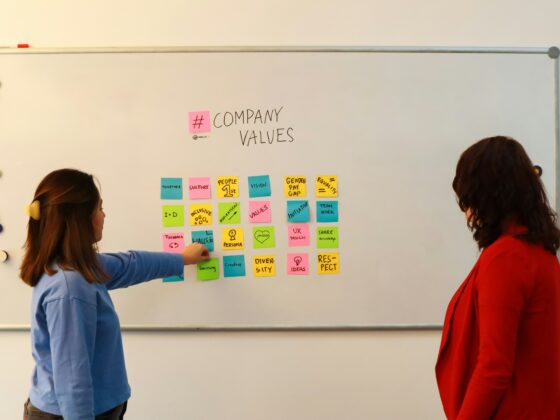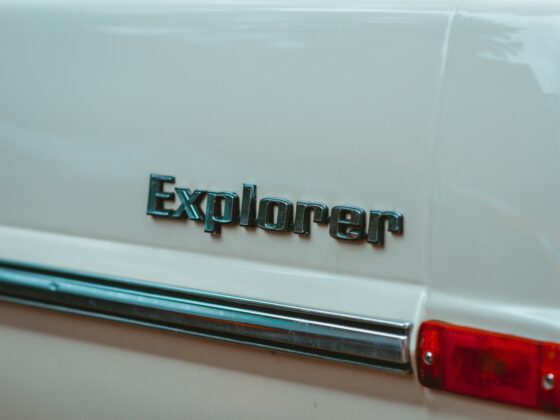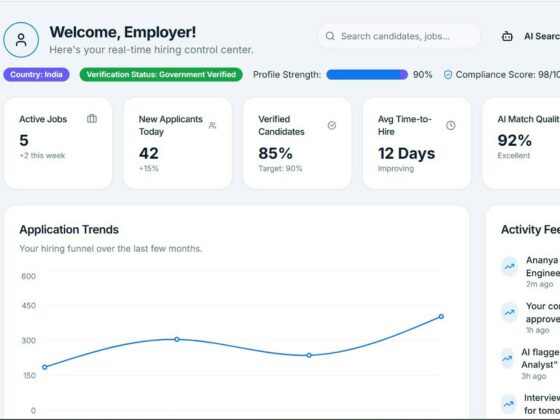The uncomfortable truth: the classic agency model is shrinking. AI, in-house teams, and procurement pressure mean many brilliant creatives won’t be rehired by advertising as we knew it. The hopeful truth: the commercial need for creativity—structured imagination that moves people to act—has exploded across the rest of the business. Our problem isn’t relevance. It’s framing.
Most creatives are thinking too narrowly about what we’re qualified to do. Meanwhile, many companies don’t know how to deploy a former creative director beyond “make an ad.” Let’s fix both sides.
The Portable Creative Skill Stack
What companies actually need—daily—maps directly to what creatives already do:
- Pattern spotting → insight framing. Turning messy inputs into clear, motivating “what this means.”
- Story architecture → decision design. Sequencing information to drive action.
- Concepting under constraint → rapid prototyping. Shipping v1s that are good enough to test.
- Taste and coherence → systems and standards. Keeping product, brand, and comms aligned.
- Collaboration at speed → cross-functional glue. Herding PMs, engineers, sales, legal, and design toward one outcome.
You didn’t lose those muscles. You just need new gyms.
Where the Work Is Now (and What to Own)
Below are business arenas where ex-agency talent can lead, with the outcomes you should be accountable for. Own a metric, not a vibe.
- Product & UX (Narrative Design / Content Design)
- Growth & Lifecycle
- Sales Enablement (Deal-Stage Storytelling)
- Customer Education & Success
- Service & Journey Design
- Insights Packaging (Research × Narrative)
- Trust, Policy & Consent UX
- Partnerships & Ecosystem Narrative
- AI Systems & Ops (Creative Systems Design)
- Employer Brand & Internal Comms
- Own: Time-to-hire, offer acceptance, engagement scores.
- Do: Recruiting narratives, culture kits, leadership comms.
- Pitch line: “I make your company make sense—to candidates and employees.”
Yes, you can still kern. You’ll just be kerning the sales deck that closes $5M.
Why Companies Don’t Know How to Use You
- They hire for boxes, not outcomes. “Content Designer II” ≠ “reduce onboarding confusion 30%.”
- They’re allergic to “creative speak.” If it doesn’t smell like a KPI, it sounds like cost.
- They can’t picture your craft inside their workflows. PMs ship tickets, not taglines.
Make Yourself Legible
- Translate your CV to outcomes. Reframe bullets as problem → action → metric.
- Rename yourself for the room you want. Titles that travel: Narrative Design Lead, Product Story Director, Growth Creative, Experience Editor, Creative Ops Architect, Sales Story Strategist.
- Carry four artifacts everywhere.
- Speak the triad: Cost, Risk, Revenue. Every idea should touch at least one—preferably two.
A 90-Day Plan That Calms Hiring Managers
- Days 1–15: Diagnose
- Days 16–30: Quick Wins
- Days 31–60: Systemize
- Days 61–90: Prove & Scale
Deliverables are tangible, repeatable, and make you the person who turns ambiguity into motion.
Engagement Models That Fit Today’s Reality
- Fractional (1–2 days/week): Embed with Product & Growth; own activation + conversion.
- Sprint-based: “Narrative Design Sprint” (2 weeks) to fix onboarding and pricing pages.
- Deal Surgery: 48-hour RFP/enterprise deck overhaul tied to win-rate targets.
- Enablement Packages: Message house + microcopy kit + training in 30 days.
- Advisory + Training: Monthly workshops for PMs/CS on story, testing, and experimentation.
When you propose, attach a metric and a timeline. Price to the business outcome, not the hours.
Ten Projects You Can Pitch Tomorrow
- Onboarding Redesign: Reduce time-to-first-value by 25%.
- Pricing Page Clarity Pass: Fewer plans, better names, proof in the right places.
- Sales Deck Rewrite: One narrative from problem→value→proof→next step; no feature salad.
- Referral Loop Design: In-product moments, reward logic, shareable artifacts.
- Self-Serve Help Revamp: Video explainers + “see it, do it” guides; deflect tickets.
- Feature Naming System: A taxonomy that sells without legal jeopardy.
- Lifecycle Messaging Map: 6-email sequence that moves trials to paid.
- Consent & Privacy UX: Clear choices that won’t tank completion.
- Partner Launch Kit: Co-brand narrative, assets, and demo flow to speed partner revenue.
- AI Guardrails: Prompt patterns + evaluation set to keep outputs on brand.
Ship one, measure, publish the result, repeat.
For Hiring Managers: How to Use a Former CD
- Write the JD in outcomes. “Increase activation 20%,” not “10+ years of Figma and vibes.”
- Seat them at Product/Growth, not only Brand. Pair with a PM and a data partner.
- Give access to customers. Calls, tickets, rejection reasons—no creativity in a vacuum.
- Fund experiments. A/B capacity, dev time, and the authority to ship.
- Measure and protect. Weekly metrics review; hold the line against opinion wars.
If you want craft and speed, give them a P&L-adjacent problem and a runway.
A Quick Word on AI (and your unfair advantage)
AI compresses execution time; it does not decide what to execute or why it matters. Your edge:
- Problem framing. Choosing the right question beats 1000 variations of the wrong answer.
- Taste as a system. Turning brand voice into reusable patterns and constraints AI can follow.
- Orchestration. Designing the workflow: research → concept → prototype → test → iterate.
Think “Creative Systems Designer,” not “prompt monkey.” Build libraries, guardrails, and evaluation methods that make teams faster and more consistent.
The Mindset Shift
Stop selling deliverables; sell business movement. Stop waiting for a brief; write the brief by finding the leak in the funnel. Stop arguing about brand in the abstract; prove it in conversion and retention.
Creativity isn’t a department. It’s an operating system for making choices under constraint. The industry may be smaller, but the canvas is bigger. Go where the decisions are being made, bring your craft, and attach it to a number.
And yes—sometimes that number is kerning. But most days, it’s revenue.







